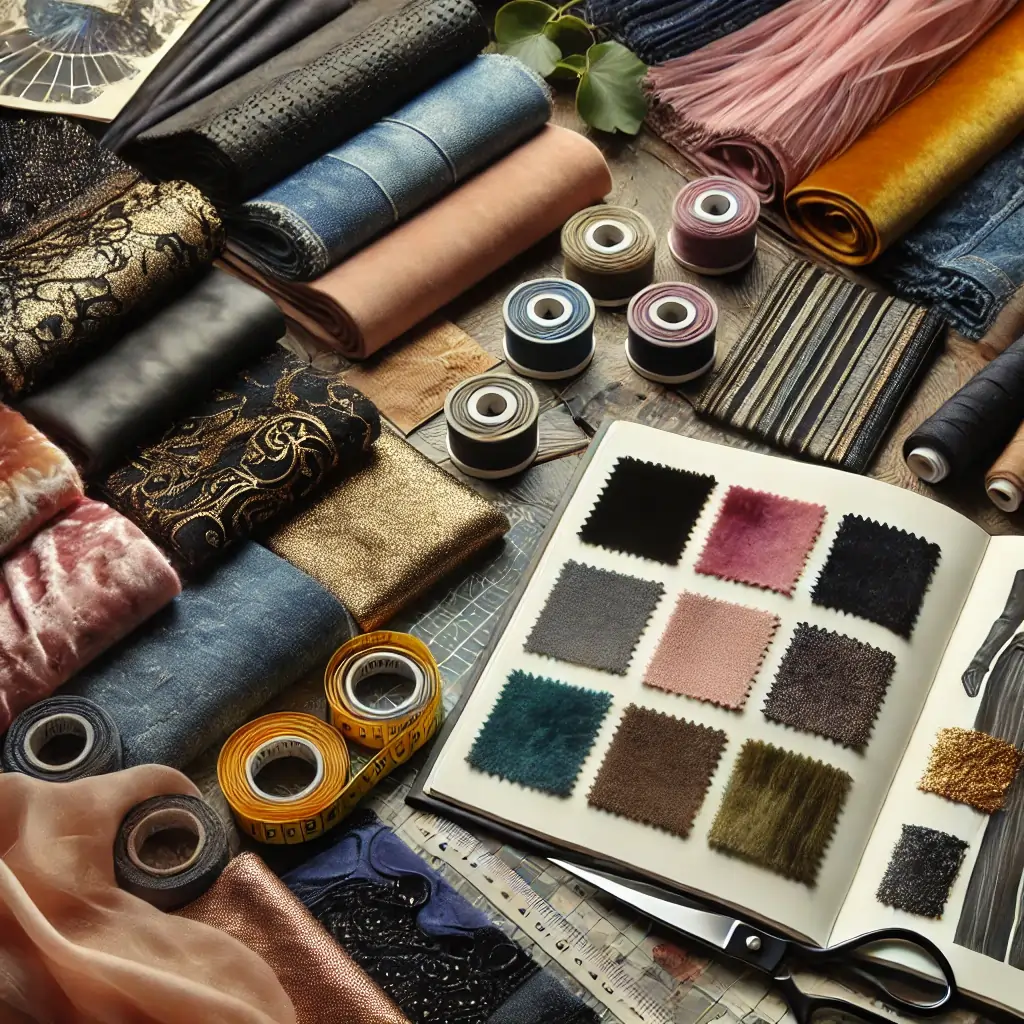Choosing the right fabrics is crucial for any fashion collection, impacting a garment’s aesthetic, feel, and overall success. It can feel overwhelming for emerging designers. How many different fabrics should you use in a collection? Where do you even begin?
Looking at how established fashion houses approach fabric usage in fashion can provide valuable insights and inspiration. By analyzing their strategies, you can gain a deeper understanding of balancing creativity and practicality in your collection.
Fabric Usage in Fashion: Lessons From the Runway
When researching fabric usage in fashion, it’s tempting to look at major fashion houses like Chanel or Valentino. But, their large-scale collections might not be relevant for a new designer building a brand.
Studying designers with smaller, more manageable collections (around 10-20 looks) offers a more relatable learning experience.
Case Study: Greta Constantine
Greta Constantine, known for its evening wear, uses a limited color palette across its collection with black, gold, pink, and green hues. This involves sourcing a variety of high-fashion fabrics.
Despite this, each piece feels distinct. The magic lies in how they manipulate fabric.
- The collection features various textures like satin fabric, velvet fabric, silk crepe, and lame.
- Interestingly, the designers utilize color variations within these core fabrics. This demonstrates how a few fabrics in different shades can achieve visual diversity without an overwhelming number of materials.
Case Study: Bianca Saunders
Examining a Bianca Saunders collection focusing on denim highlights how fabric manipulation leads to variety. Instead of using a dozen denim variations, they incorporate:
- Cotton twill – Often mistaken for denim, twill offers a similar aesthetic with potential cost savings. Twill is a tightly woven fabric often seen in casual wear.
- Printed T-shirt Materials – Playful prints add personality without relying on complex fabric sourcing. Many printed T-shirt materials are knit fabric rather than woven fabric.
- French Terry – Expanding beyond traditional denim looks, French Terry (commonly used for sweats) adds casual, comfortable pieces to the collection. Despite its name, French Terry fabric is a versatile choice within the textile industry and can be used beyond athletic wear.
Again, it’s about maximizing the use of each fabric rather than overwhelming your collection.
Case Study: Harris Reed
Harris Reed showcases stunning designs with a remarkably curated fabric selection in his 10-piece collection, relying heavily on satin and taffeta, primarily in floral prints. What makes this approach so effective? It’s all about manipulation. Here are some tactics to employ:
- Creative Cutting: Play with shapes and how you piece fabrics. Breaking up floral prints with interesting cuts can create entirely new visual experiences. Smooth surface fabrics, like silk satin or silk taffeta, lend themselves well to this technique.
- Embellishments and Trims: Simple additions, like beads on fabric, can significantly elevate the look. Chiffon fabric pairs well with embellishments because of its lightweight and flowy properties. This creates a luxurious feel and helps establish an ethical fashion brand identity.
- Print Placement: Mindfully place prints for a dramatic visual impact (like emphasizing floral borders).
Harris Reed’s strategy shows how limited fabric use doesn’t equal a limited design. With ingenuity, a few fabrics transform into a cohesive collection.
Case Study: Derek Lamb
Derek Lamb’s work at Kalas Milano exemplifies using classic, versatile fabrics in fresh ways. The Fall/Winter collection incorporates staples like:
- Wool Melton
- Wool Coatings
- Cotton Twill
- Sateen
These fabrics transcend seasonal trends and can be incorporated into designs for multiple seasons. They also work well with the technological advancements we are seeing with synthetic fibers, such as synthetic rubber, which can be blended with natural fibers. The collection includes unique pieces like a Tattersall Tweed or a printed silk shirt. But, incorporating primarily seasonless materials creates a solid foundation for the collection.
This approach makes smart business sense for both fabric sourcing and maintaining a cohesive brand aesthetic over time. Merino wool is another fabric that transcends seasons. It has moisture-wicking properties that are great for summer clothing, but also provide warmth in the winter.
Conclusion
Studying how different designers handle fabric usage in fashion reveals invaluable lessons. Limiting your palette doesn’t mean sacrificing creativity. Remember, building a strong brand relies on more than having the most expensive or diverse materials. Instead, focus on maximizing each fabric’s potential, playing with texture, print, color, and shape to build a cohesive and exciting collection.
Sourcing high-quality raw materials can elevate the final product as well. Understanding the gsm fabric (grams per square meter) is a good place to start when thinking about the feel you are going for. Linen linen is a great option for summer.
For example, you can create a full summer clothing line by only using linen, but with variations in color, weight, and texture. This way, you are keeping your fabric sourcing more streamlined and less complicated, but still giving your customers variety.
Helpful Reads:



